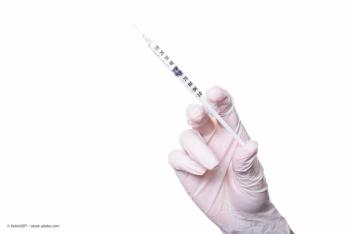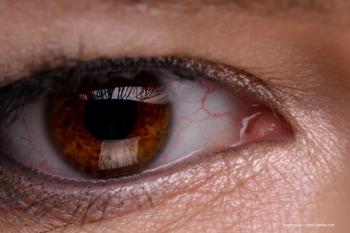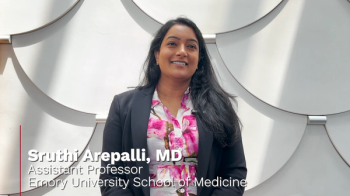
Adalimumab efficacious for uveitis regardless of disease duration
Quiescence, steroid-free quiescence achieved in VISUAL III trial
Adalimumab obtained good results in patients with non-infectious uveitis regardless of the length of time the patients had the disease.
Reviewed by Jennifer E. Thorne, MD, PhD
Adalimumab (Humira, AbbVie)
The VISUAL III trial is an open-label extension study in which quiescence was defined as no active inflammatory lesions and an anterior chamber cell grade of 0.5+ or lower and a vitreous haze grade of 0.5+ or lower. Inflammatory lesions were defined as inflammatory chorioretinal and/or inflammatory retinal vascular lesions, Dr. Thorne noted.
The study endpoints were determination of the percentage of patients with quiescence and steroid-free quiescence, the mean daily systemic corticosteroid dose, the mean logarithm of the minimum angle of resolution (logMAR) best-corrected visual acuity (BCVA), and any adverse events through week 78 of the study.
The results were assessed in three subgroups based on the disease duration, i.e., less than 1 year, 1 year to less than 3 years, and 3 years or longer. A total of 424 patients were enrolled in the study.
The patients received a loading dose of 80 mg, followed by 40 mg of adalimumab every other week out to 78 weeks. When divided into the subgroups based on disease duration, 50 patients had uveitis for less than 1 year, 125 for from 1 year to less than 3 years, and 196 for 3 years or longer.
The respective mean disease durations were 8.2 ± 2.7, 22.2 ± 6.9, and 102.5 ± 71.8 months, Dr. Thorne said.
The proportion of patients with disease quiescence improved over time regardless of the duration of the disease. At week 78, across the three disease duration subgroups, 85% or more of the patients had achieved quiescence. In addition, the investigators saw numeric improvements in the percentages of patients who achieved steroid-free quiescence regardless of the disease duration.
By week 78, across the three disease duration subgroups, 57% to 63% of patients had achieved quiescence without the need for daily corticosteroids.
Observations
The investigators also observed that reductions in the mean systemic corticosteroid daily dose were achieved regardless of the disease duration compared with baseline.
The mean decreases were: 10.5 mg/ day among patients with uveitis for less than 1 year, 6.0 mg/day among patients with uveitis for from 1 year to less than 3 years, and 7.0 mg/day among patients with uveitis for 3 years or longer.
In line with the improvements in uveitis, the mean logMAR BCVA also improved between weeks 0 and 78 weeks in the three patient subgroups. The mean logMAR BCVA at week 78 was 0.05, 0.06, and 0.15, respectively. No new safety signals were identified, and the safety profile was consistent with the known safety profile across the approved indications for adalimumab.
More adverse events occurred among the patients with uveitis for less than 1 year that possibly were related to higher rates of corticosteroid use in that subgroup. When analyzed by the corticosteroid dose, patients taking more than 7.5 mg daily had more adverse events than patients taking 7.5 mg daily or less in each disease duration subgroup.
Dr. Thorne concluded, “Analyses from the VISUAL III trial of patients with non-infectious uveitis treated with adalimumab demonstrated improved efficacy outcomes through weeks 0 to 78 of the study, regardless of the disease duration of uveitis, for the following endpoints: the proportion of patients with quiescence and steroid-free quiescence, the mean daily corticosteroid dose, and BCVA.”
Disclosures:
Jennifer E. Thorne, MD, PhD
E: jthorne@jhmi.edu
This article was adapted from Dr. Thorne’s presentation at the 2018 meeting of the American Academy of Ophthalmology. Dr. Thorne is on the advisory boards for AbbVie, Clearside, and Santen, and is a consultant for Gilead, and NightstaRx. She receives grants funding from the NEI/NIH and Allergan.
Newsletter
Keep your retina practice on the forefront—subscribe for expert analysis and emerging trends in retinal disease management.













































